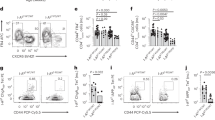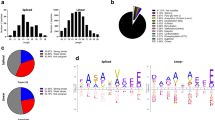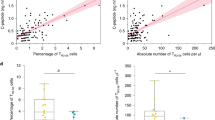Abstract
Human leukocyte antigen (HLA) class II haplotypes are established risk factors in type 1 diabetes (T1D). The heterozygous DQ2/8 genotype confers the highest risk, whereas the DQ6/8 genotype is protective. We hypothesized that DQ2/8 trans-molecules composed of α and β chains from DQ2 and DQ8 express unique β-cell epitopes, whereas DQ6 may interfere with peptide binding to DQ8. Here we show that a single insulin epitope (InsB13-21) within the T1D prototype antigenic InsB6-22 peptide can bind to both cis- and trans-dimers, although these molecules display different peptide binding patterns. DQ6 binds a distinct insulin epitope (InsB6-14). The phenotype of DQ8-restricted T cells from a T1D patient changed from proinflammatory to anti-inflammatory in the presence of DQ6. Our data provide new insights into both susceptible and protective mechanism of DQ, where protecting HLA molecules bind autoantigens in a different (competing) binding register leading to ‘epitope stealing’, thereby inducing a regulatory, rather than a pathogenic immune response.
This is a preview of subscription content, access via your institution
Access options
Subscribe to this journal
Receive 6 digital issues and online access to articles
$119.00 per year
only $19.83 per issue
Buy this article
- Purchase on Springer Link
- Instant access to full article PDF
Prices may be subject to local taxes which are calculated during checkout






Similar content being viewed by others
References
Atkinson MA, Maclaren NK . The pathogenesis of insulin-dependent diabetes mellitus. N Engl J Med 1994; 331: 1428–1436.
Cudworth AG, Wolf E . The genetics of Type 1 (insulin-dependent) diabetes. Curr Probl Clin Biochem 1983; 12: 45–64.
Khalil I, d’Auriol L, Gobet M, Morin L, Lepage V, Deschamps I et al. A combination of HLA-DQ beta Asp57-negative and HLA DQ alpha Arg52 confers susceptibility to insulin-dependent diabetes mellitus. J Clin Invest 1990; 85: 1315–1319.
Schipper RF, Koeleman BP, Bruining GJ, Schreuder GM, Verduijn W, De Vries RR et al. HLA class II associations with Type 1 diabetes mellitus: a multivariate approach. Tissue Antigens 2001; 57: 144–150.
Desai M, Zeggini E, Horton VA, Owen KR, Hattersley AT, Levy JC et al. The variable number of tandem repeats upstream of the insulin gene is a susceptibility locus for latent autoimmune diabetes in adults. Diabetes 2006; 55: 1890–1894.
Zhernakova A, Eerligh P, Wijmenga C, Barrera P, Roep BO, Koeleman BP . Differential association of the PTPN22 coding variant with autoimmune diseases in a Dutch population. Genes Immun 2005; 6: 459–461.
Zhernakova A, Eerligh P, Barrera P, Wesoly JZ, Huizinga TW, Roep BO et al. CTLA4 is differentially associated with autoimmune diseases in the Dutch population. Hum Genet 2005; 118: 58–66.
Concannon P, Rich SS, Nepom GT . Genetics of type 1A diabetes. N Engl J Med 2009; 360: 1646–1654.
Jones EY, Fugger L, Strominger JL, Siebold C . MHC class II proteins and disease: a structural perspective. Nat Rev Immunol 2006; 6: 271–282.
Sanjeevi CB . HLA-DQ6-mediated protection in IDDM. Hum Immunol 2000; 61: 148–153.
Thorsby E, Ronningen KS . Role of HLA genes in predisposition to develop insulin-dependent diabetes mellitus. Ann Med 1992; 24: 523–531.
Khalil I, Deschamps I, Lepage V, al-Daccak R, Degos L, Hors J . Dose effect of cis- and trans-encoded HLA-DQ alpha beta heterodimers in IDDM susceptibility. Diabetes 1992; 41: 378–384.
Koeleman BP, Lie BA, Undlien DE, Dudbridge F, Thorsby E, De Vries RR et al. Genotype effects and epistasis in type 1 diabetes and HLA-DQ trans dimer associations with disease. Genes Immun 2004; 5: 381–388.
Kwok WW, Kovats S, Thurtle P, Nepom GT . HLA-DQ allelic polymorphisms constrain patterns of class II heterodimer formation. J Immunol 1993; 150: 2263–2272.
Siebold C, Hansen BE, Wyer JR, Harlos K, Esnouf RE, Svejgaard A et al. Crystal structure of HLA-DQ0602 that protects against type 1 diabetes and confers strong susceptibility to narcolepsy. Proc Natl Acad Sci USA 2004; 101: 1999–2004.
Masewicz SA, Meldrum N, Gersuk V, Gaur L, Hagopian W, Moriarity L et al. Complexity of human immune response profiles for CD4+ T cell epitopes from the diabetes autoantigen GAD65. Autoimmunity 2001; 34: 231–240.
Miller GG, Pollack MS, Nell LJ, Thomas JW . Insulin-specific human T cells. Epitope specificity, major histocompatibility complex restriction, and alloreactivity to a diabetes-associated haplotype. J Immunol 1987; 139: 3622–3629.
Schloot NC, Willemen S, Duinkerken G, De Vries RR, Roep BO . Cloned T cells from a recent onset IDDM patient reactive with insulin B-chain. J Autoimmun 1998; 11: 169–175.
Kent SC, Chen Y, Bregoli L, Clemmings SM, Kenyon NS, Ricordi C et al. Expanded T cells from pancreatic lymph nodes of type 1 diabetic subjects recognize an insulin epitope. Nature 2005; 435: 224–228.
Tree TI, Lawson J, Edwards H, Skowera A, Arif S, Roep BO et al. Naturally arising human CD4 T-cells that recognize islet autoantigens and secrete interleukin-10 regulate proinflammatory T-cell responses via linked suppression. Diabetes 2010; 59: 1451–1460.
Tree TI, Duinkerken G, Willemen S, De Vries RR, Roep BO . HLA-DQ-regulated T-cell responses to islet cell autoantigens insulin and GAD65. Diabetes 2004; 53: 1692–1699.
Durinovic-Bello I, Schlosser M, Riedl M, Maisel N, Rosinger S, Kalbacher H et al. Pro- and anti-inflammatory cytokine production by autoimmune T cells against preproinsulin in HLA-DRB1*04, DQ8 Type 1 diabetes. Diabetologia 2004; 47: 439–450.
Harfouch-Hammoud E, Walk T, Otto H, Jung G, Bach JF, van Endert PM et al. Identification of peptides from autoantigens GAD65 and IA-2 that bind to HLA class II molecules predisposing to or protecting from type 1 diabetes. Diabetes 1999; 48: 1937–1947.
Moustakas AK, Routsias J, Papadopoulos GK . Modelling of the MHC II allele I-A(g7) of NOD mouse: pH-dependent changes in specificity at pockets 9 and 6 explain several of the unique properties of this molecule. Diabetologia 2000; 43: 609–624.
Lee KH, Wucherpfennig KW, Wiley DC . Structure of a human insulin peptide–HLA-DQ8 complex and susceptibility to type 1 diabetes. Nat Immunol 2001; 2: 501–507.
Hennecke J, Carfi A, Wiley DC . Structure of a covalently stabilized complex of a human alphabeta T-cell receptor, influenza HA peptide and MHC class II molecule, HLA-DR1. EMBO J 2000; 19: 5611–5624.
Hennecke J, Wiley DC . T cell receptor–MHC interactions up close. Cell 2001; 104: 1–4.
Godkin A, Friede T, Davenport M, Stevanovic S, Willis A, Jewell D et al. Use of eluted peptide sequence data to identify the binding characteristics of peptides to the insulin-dependent diabetes susceptibility allele HLA-DQ8 (DQ 3.2). Int Immunol 1997; 9: 905–911.
Kim CY, Quarsten H, Bergseng E, Khosla C, Sollid LM . Structural basis for HLA-DQ2-mediated presentation of gluten epitopes in celiac disease. Proc Natl Acad Sci USA 2004; 101: 4175–4179.
Stepniak D, Wiesner M, de Ru AH, Moustakas AK, Drijfhout JW, Papadopoulos GK et al. Large-scale characterization of natural ligands explains the unique gluten-binding properties of HLA-DQ2. J Immunol 2008; 180: 3268–3278.
van de Wal Y, Kooy YM, Drijfhout JW, Amons R, Koning F . Peptide binding characteristics of the coeliac disease-associated DQ(alpha1*0501, beta1*0201) molecule. Immunogenetics 1996; 44: 246–253.
Bondinas GP, Moustakas AK, Papadopoulos GK . The spectrum of HLA-DQ and HLA-DR alleles, 2006: a listing correlating sequence and structure with function. Immunogenetics 2007; 59: 539–553.
Ettinger RA, Kwok WW . A peptide binding motif for HLA-DQA1*0102/DQB1*0602, the class II MHC molecule associated with dominant protection in insulin-dependent diabetes mellitus. J Immunol 1998; 160: 2365–2373.
Carlotti F, Bazuine M, Kekarainen T, Seppen J, Pognonec P, Maassen JA et al. Lentiviral vectors efficiently transduce quiescent mature 3T3-L1 adipocytes. Mol Ther 2004; 9: 209–217.
Reichstetter S, Papadopoulos GK, Moustakas AK, Swanson E, Liu AW, Beheray S et al. Mutational analysis of critical residues determining antigen presentation and activation of HLA-DQ0602 restricted T-cell clones. Hum Immunol 2002; 63: 185–193.
Wiesner M, Stepniak D, de Ru AH, Moustakis AK, Drijfhout JW, Papadopoulos GK et al. Dominance of an alternative CLIP sequence in the celiac disease associated HLA-DQ2 molecule. Immunogenetics 2008; 60: 551–555.
Stadinski BD, Zhang L, Crawford F, Marrack P, Eisenbarth GS, Kappler JW . Diabetogenic T cells recognize insulin bound to IAg7 in an unexpected, weakly binding register. Proc Natl Acad Sci USA 2010; 107: 10978–10983.
Alleva DG, Crowe PD, Jin L, Kwok WW, Ling N, Gottschalk M et al. A disease-associated cellular immune response in type 1 diabetics to an immunodominant epitope of insulin. J Clin Invest 2001; 107: 173–180.
Arif S, Tree TI, Astill TP, Tremble JM, Bishop AJ, Dayan CM et al. Autoreactive T cell responses show proinflammatory polarization in diabetes but a regulatory phenotype in health. J Clin Invest 2004; 113: 451–463.
Daniel D, Gill RG, Schloot N, Wegmann D . Epitope specificity, cytokine production profile and diabetogenic activity of insulin-specific T cell clones isolated from NOD mice. Eur J Immunol 1995; 25: 1056–1062.
Levisetti MG, Suri A, Petzold SJ, Unanue ER . The insulin-specific T cells of nonobese diabetic mice recognize a weak MHC-binding segment in more than one form. J Immunol 2007; 178: 6051–6057.
Munz C, Hofmann M, Yoshida K, Moustakas AK, Kikutani H, Stevanovic S et al. Peptide analysis, stability studies, and structural modeling explain contradictory peptide motifs and unique properties of the NOD mouse MHC class II molecule H2-A(g7). Eur J Immunol 2002; 32: 2105–2116.
Hassainya Y, Garcia-Pons F, Kratzer R, Lindo V, Greer F, Lemonnier FA et al. Identification of naturally processed HLA-A2-restricted proinsulin epitopes by reverse immunology. Diabetes 2005; 54: 2053–2059.
Pinkse GG, Tysma OH, Bergen CA, Kester MG, Ossendorp F, van Veelen PA et al. Autoreactive CD8 T cells associated with beta cell destruction in type 1 diabetes. Proc Natl Acad Sci USA 2005; 102: 18425–18430.
Harrison LC, Solly NR, Martinez NR . (Pro)insulin-specific regulatory T cells. Novartis Found Symp 2003; 252: 132–141.
Martinez NR, Augstein P, Moustakas AK, Papadopoulos GK, Gregori S, Adorini L et al. Disabling an integral CTL epitope allows suppression of autoimmune diabetes by intranasal proinsulin peptide. J Clin Invest 2003; 111: 1365–1371.
Hahn M, Nicholson MJ, Pyrdol J, Wucherpfennig KW . Unconventional topology of self peptide-major histocompatibility complex binding by a human autoimmune T cell receptor. Nat Immunol 2005; 6: 490–496.
Li Y, Huang Y, Lue J, Quandt JA, Martin R, Mariuzza RA . Structure of a human autoimmune TCR bound to a myelin basic protein self-peptide and a multiple sclerosis-associated MHC class II molecule. EMBO J 2005; 24: 2968–2979.
Kranc KR, Taylor AM, Willcox N, Fugger L . Control of autoimmunity by ‘epitope theft’. Trends Mol Med 2005; 11: 1–4.
Nepom GT, Kwok WW . Molecular basis for HLA-DQ associations with IDDM. Diabetes 1998; 47: 1177–1184.
Mohan JF, Levisetti MG, Calderon B, Herzog JW, Petzold SJ, Unanue ER . Unique autoreactive T cells recognize insulin peptides generated within the islets of Langerhans in autoimmune diabetes. Nature 2010; 11: 350–355.
Moustakas AK, Papadopoulos GK . Use of II MHC structural features in the design of vaccines for organ-specific autoimmune diseases. Curr Pharm Des 2009; 15: 3262–3273.
Acknowledgements
We thank Demetrios Kyrkas and Martijn Rabelink for technical support. These studies were funded in part by the European Union 3rd Regional Development Framework for Greece (Program ARCHIMEDES) to GKP, the Dutch Diabetes Research Foundation, The Netherlands Organization for Health Research and Development (ZonMW) and the Juvenile Diabetes Research Foundation to BOR. The Silicon Graphics Fuel instrument and the accompanying software were obtained via the Epirus Regional Development Programme to Epirus Institute of Technology and of the 3rd Community Support Framework of the EU.
Author information
Authors and Affiliations
Corresponding author
Ethics declarations
Competing interests
The authors declare no conflict of interest.
Additional information
Supplementary Information accompanies the paper on Genes and Immunity website
Rights and permissions
About this article
Cite this article
Eerligh, P., van Lummel, M., Zaldumbide, A. et al. Functional consequences of HLA-DQ8 homozygosity versus heterozygosity for islet autoimmunity in type 1 diabetes. Genes Immun 12, 415–427 (2011). https://doi.org/10.1038/gene.2011.24
Received:
Accepted:
Published:
Issue Date:
DOI: https://doi.org/10.1038/gene.2011.24
Keywords
This article is cited by
-
Nine residues in HLA-DQ molecules determine with susceptibility and resistance to type 1 diabetes among young children in Sweden
Scientific Reports (2021)
-
Associations of human leukocyte antigens with autoimmune diseases: challenges in identifying the mechanism
Journal of Human Genetics (2015)
-
Molecular Interactions Governing Autoantigen Presentation in Type 1 Diabetes
Current Diabetes Reports (2015)
-
HLA dosage effect in narcolepsy with cataplexy
Immunogenetics (2015)



